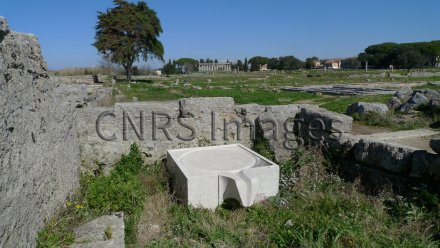Production year
2011

© Luc RONAT/CNRS Images
20110001_2217
Bloc de calcaire très solide appelé "maie", trouvé à Paestum en Italie, dans les vestiges d'une boutique de parfumeur antique. Ce bloc servait de base à un pressoir. L'huile extraite de la pâte d'olives ou d'amandes s'écoulait par les rigoles jusqu'au pied du bec. Dans l'Antiquité, l'huile était l'ingrédient principal du parfum, elle était mélangée aux fleurs pour fabriquer les précieuses senteurs.
The use of media visible on the CNRS Images Platform can be granted on request. Any reproduction or representation is forbidden without prior authorization from CNRS Images (except for resources under Creative Commons license).
No modification of an image may be made without the prior consent of CNRS Images.
No use of an image for advertising purposes or distribution to a third party may be made without the prior agreement of CNRS Images.
For more information, please consult our general conditions
2011
Our work is guided by the way scientists question the world around them and we translate their research into images to help people to understand the world better and to awaken their curiosity and wonderment.